Golf Irons Explained: Types and How to Choose
This overview explains the different types of golf irons and how to choose the type for you
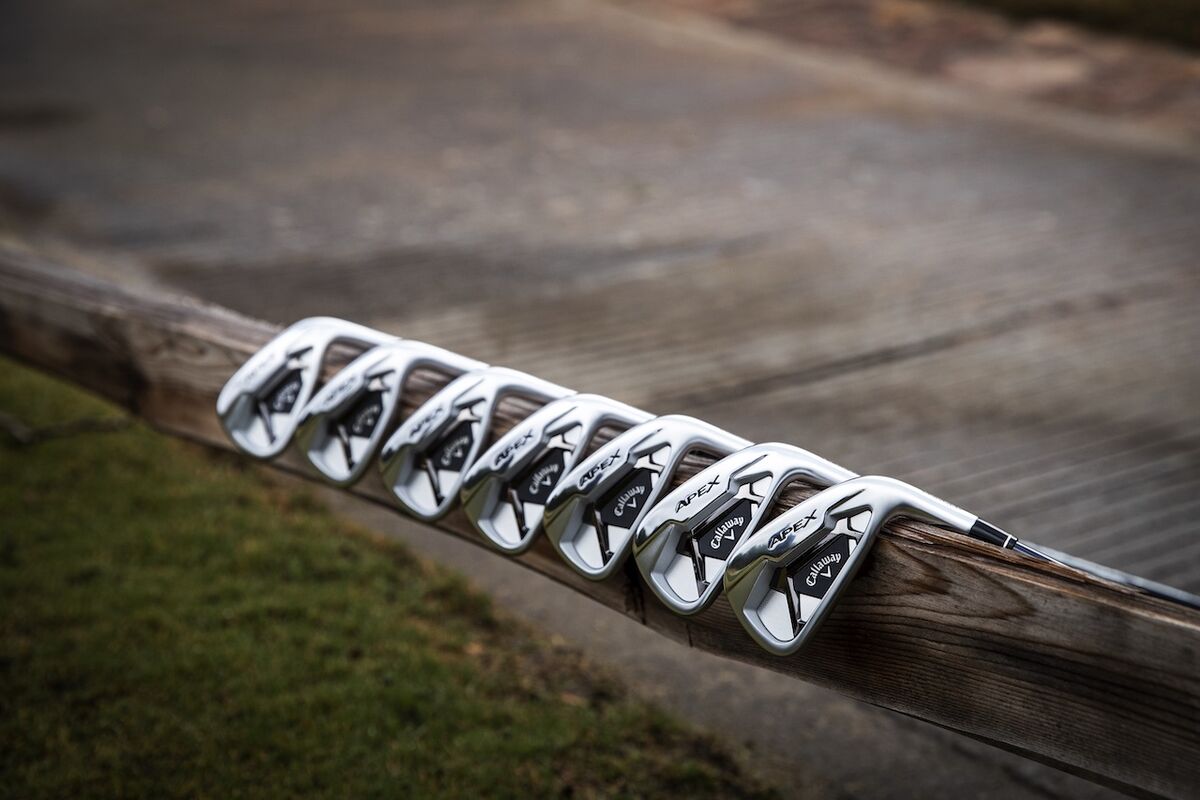
You want to nail your investment in a new set of irons from both a financial standpoint and a performance standpoint. Having irons that fit your game makes golf much more enjoyable and helps you shoot lower scores. This guide details what type of irons are best for each level of golfer, and we give our recommendations of which models to consider in each category.
Types of Irons
Golf irons are just like music and movies. There are different genres, but the lines between two adjacent genres are sometimes blurry. Here are the different types of golf irons.
|
Category |
Player Profile |
Our Pick |
Shop |
|
Hybrid Irons |
Need max launch & forgiveness |
Cleveland HALO XL |
|
|
Super Game Improvement |
Beginners & seniors with slower swing speeds |
Callaway Big Bertha |
|
|
Game Improvement |
Players shooting in the 80s & 90s |
TaylorMade Stealth |
|
|
Cavity Back |
Players who want distance, forgiveness & feel |
Srixon ZX5 Mk II |
|
|
Players Distance |
Players who prioritize distance, forgiveness & workability |
Mizuno Pro 243 |
|
|
Muscle Back |
Players shooting in the 70s |
Callaway Apex MB |
|
|
Players |
Skilled players who don’t prefer blades |
TaylorMade P7MC |
|
|
Blades |
5-handicap or better players who want workability |
Wilson Staff Blades |
We must note that not all of these categories are exclusive of one-another. For example, cavity back irons are defined by the cavity in the back of the iron head, and any iron from Players irons to Super Game Improvement irons can be a cavity-back. Still, the cavity back design yields distance and forgiveness.
Additionally, hybrid irons fall into the super game improvement category, but not all super game improvement irons are a full hybrid set.
Hybrid Irons
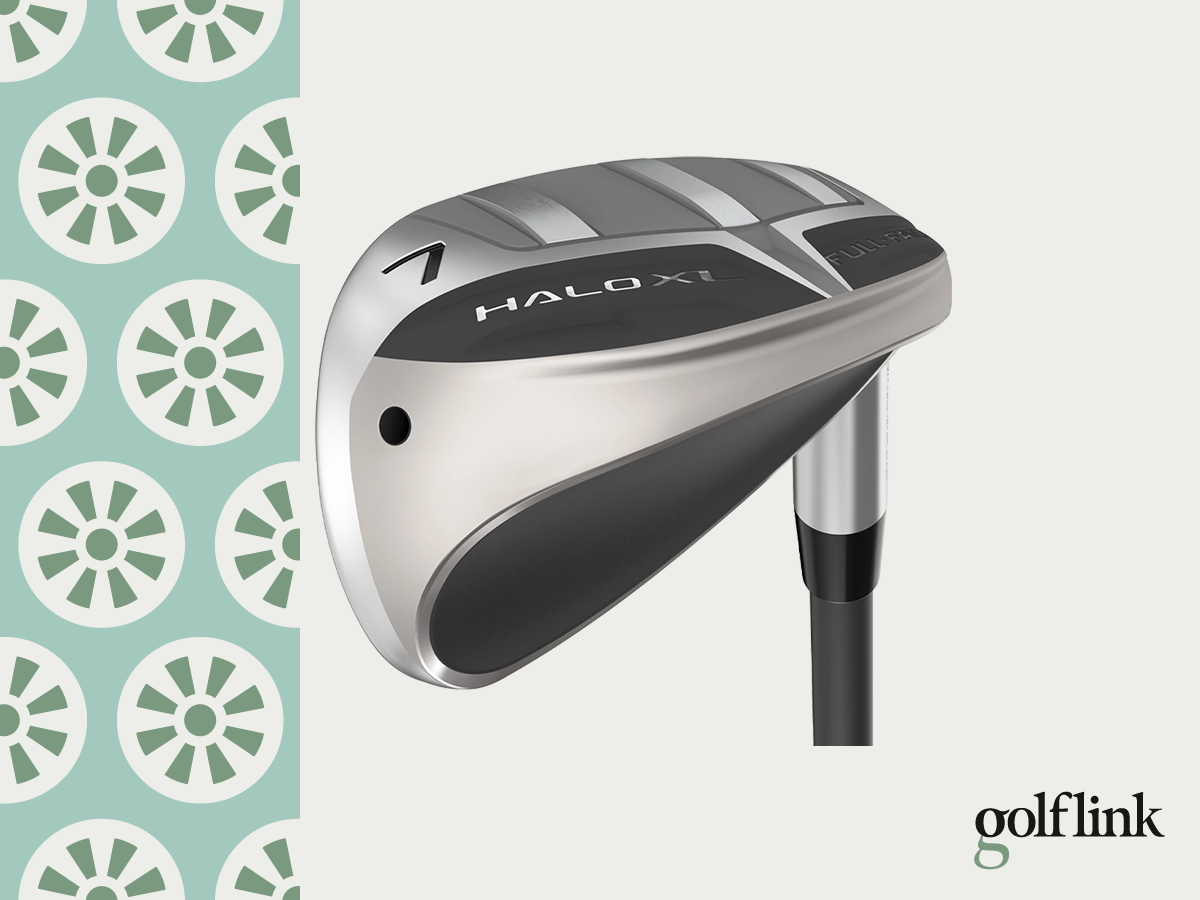
Player Profile: Need max launch & forgiveness
GolfLink’s Pick: Cleveland HALO XL
SHOP CLEVELAND
Hybrid golf clubs gained popularity in the early 2000s and were accepted as mainstream clubs to add to your golf bag. The hybrid movement also ushered in complete sets of hybrid irons. While not every manufacturer offers sets of hybrid irons, they do have a following and fit certain players well.
Hybrid irons take some getting used to, mainly due to aesthetics. They possess a lot of the same qualities as super game improvement irons in that they’re designed to get the ball in the air with ease and provide a boost in distance due to the CG and weighting being almost entirely at the back of the club head. Hybrid irons are typically paired with graphite shafts, but some light steel shafts can be used.
Who Should Play Hybrid Irons
A full set of hybrid irons benefits golfers who are comfortable looking down at hybrids for every iron in their bag, including wedges. Beyond that, it’s a toss-up between these and super game improvement irons. Hybrid irons are best suited for seniors looking for more distance.
Cleveland HALO XL Hybrid Irons
Cleveland has separated itself from the pack in recent years with its clubs designed for forgiveness and slower swing speeds. That’s why these HALO XL irons get our recommendation for players looking for the best hybrid irons.
You’ll enjoy the turf interaction with the wide sole, and you won’t have to swing hard to maximize your distance with the larger footprint of the head.
With full-face grooves, these are designed to be struck all across the face.
Super Game Improvement Irons

Player Profile: Beginners & seniors with slower swing speeds
GolfLink’s Pick: Callaway Big Bertha
FIND ON AMAZON
The super game improvement iron category has been around for less than a decade. There have always been versions of super game improvement irons, but today just about every manufacturer offers its own model.
Super game improvement irons are designed to provide the highest level of forgiveness, launch, and distance that money can buy. They are often paired with graphite shafts or lighter steel shafts to help promote maximum club head speed and distance.
Super game improvement sets typically start with a 5-iron and run all the way to sand or lob wedge, eliminating the harder-to-hit 3- and 4-irons, which you can replace with easier-to-hit hybrid.
Super game improvement irons feature the widest sole of any irons on the market to support consistent contact and forgiveness. They also have the highest level of offset to promote a draw or reduce a slice tendency.
Who Should Play Super Game Improvement Irons
Super game improvement irons are best for players with low to moderate swing speeds, and for that reason, they tend to fit beginners and seniors better than anyone else.
Beginners benefit from maximum forgiveness as they begin the early stages of learning the golf swing. Meanwhile, seniors who have seen a drop in yardage find that super game improvement irons help with distance.
Callaway Big Bertha Super Game Improvement Irons
One of the biggest knocks on super game improvement irons is their typical off-putting looks, but you’ll be turning heads for the right reasons with these Callaway Big Bertha irons in the bag. These are designed to be super easy to hit, churning out maximum distance with forgiveness on the outer-edges of the face.
Game Improvement Irons

Player Profile: Players shooting in the 80s & 90s
GolfLink’s Pick: TaylorMade Stealth
FIND ON AMAZON
Game improvement irons are a toned-down version of super game improvements irons and they fit a much wider range of golfers. Some players can actually stay in game improvement irons for their entire golf life.
Game improvement irons have a wide sole and large overall footprint and are also offset to help promote a draw. However, the offset is more subtle than on super game improvement irons. Game improvement irons are typically cast iron, as opposed to forged, and can be cavity back or feature a full-body design.
Game improvement irons are sold as either complete sets or combo sets that include hybrids instead of 3-, 4-, or even 5-irons. Some game improvement irons are blended into a set for more advanced players with the 4- and 5-irons fitting the game improvement profile while the 6-iron and above are players irons.
Who Should Play Game Improvement Irons
Game improvement irons fit a large percentage of amateur golfers, anywhere from a 15 handicap and above, or players who typically shoot scores in the 80s and 90s. Players who want all of the technological advancements available to help them get around the course, but don’t need the help of a super game improvement iron should consider this iron profile.
TaylorMade Stealth Game Improvement Irons
In our game improvement iron testing, TaylorMade Stealth irons took the gold medal for distance and ball speed, and they were the easiest irons to find the sweet spot. Since that's such a huge component of this entire category, they earned our seal of approval as the best game improvement irons.
We also loved their sleek look with the capped cavity design and neutral color scheme.
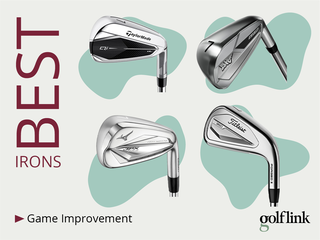
The 9 Best Game Improvement Irons
Cavity Back Irons
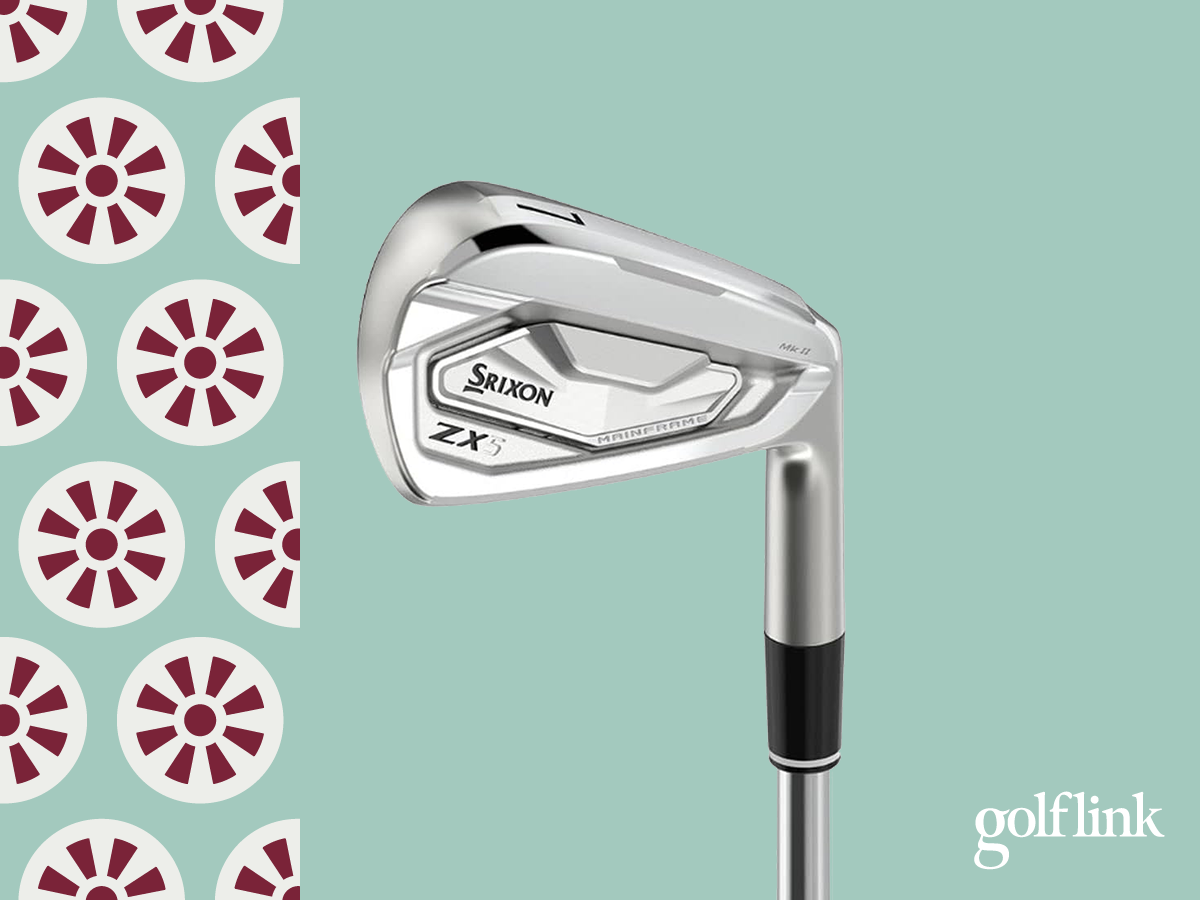
Player Profile: Players who want distance, forgiveness & feel
GolfLink’s Pick: Srixon ZX5 Mk II
SHOP SRIXON
Cavity back irons span multiple genres of iron sets. They can be game improvement irons, and they can also be players irons. What makes them “cavity back” is the club’s material that has been removed behind the club face to reallocate weight to the perimeter of the club, increasing ball speed and forgiveness on strikes that miss the sweet spot.
The one constant with cavity back irons is that they are intended for distance and forgiveness, without sacrificing feel.
Who Should Play Cavity Back Irons
Due to the varying genres that cavity back irons fall into, it’s not cut and dry who these irons fit best. Cavity back game improvement irons can be a great fit for players who shoot in the 80s and 90s, while cavity back players irons can be a fit for players capable of posting scores in the 70s and 80s.
Srixon ZX5 Mk II Cavity Back Irons
Srixon irons are wildly underrated. With the ZX5 Mk II irons, low-to-mid-handicap players enjoy excellent feel, pleasing forgiveness, and plenty of distance.
These irons have a smaller profile – a more player’s profile – than the game improvement categories of irons, with a thinner topline and tame sole, yet are plenty playable. You don’t have to be on your way to scratch to enjoy these irons.
Players Distance Irons
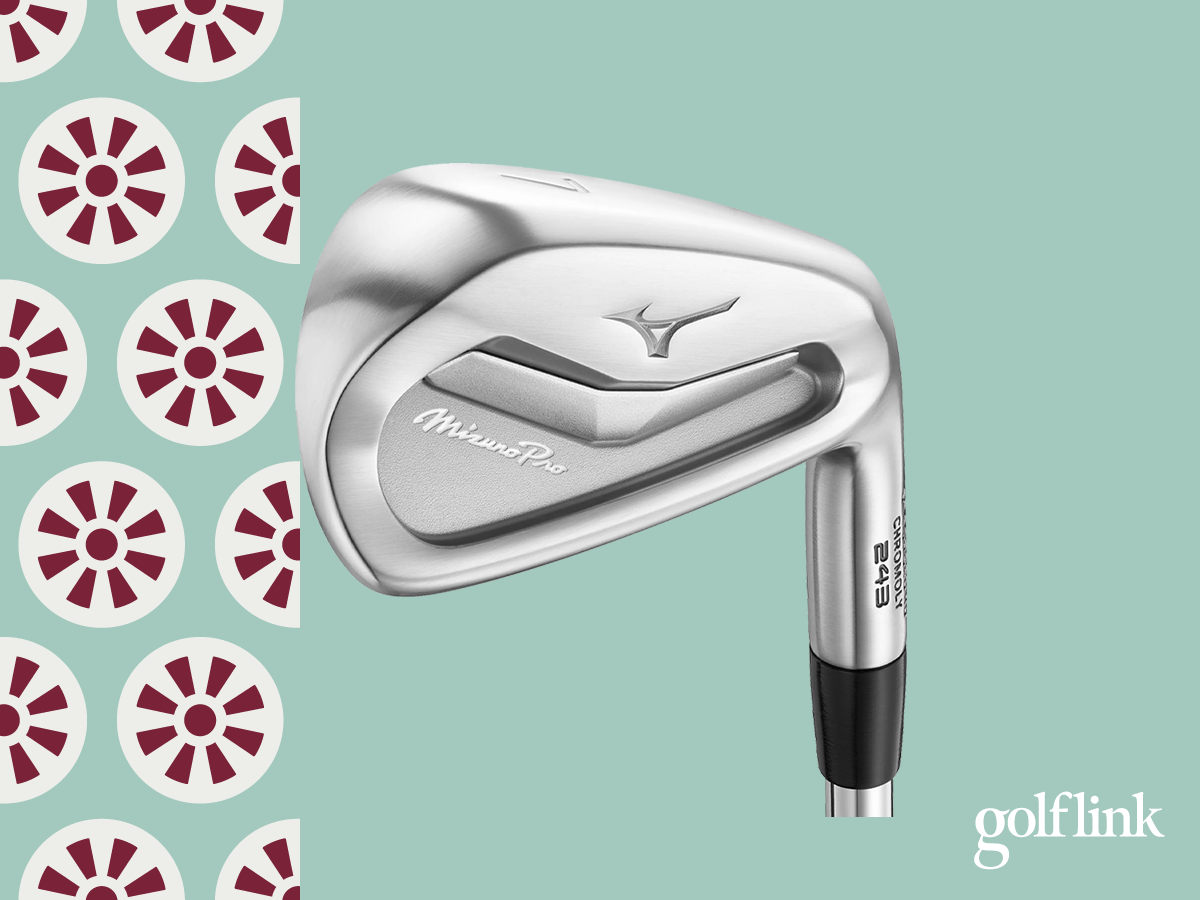
Player Profile: Players who prioritize distance, forgiveness & workability
GolfLink’s Pick: Mizuno Pro 243
SHOP MIZUNOSHOP DICK'S
The players distance iron genre was born out of necessity and consumer demand. Golfers playing game improvement irons who felt they weren't getting enough spin on their approach shots but also weren’t ready to sacrifice distance by switching to players irons needed another alternative. And with that, players distance irons were born.
Players distance irons are typically cavity back irons with a thinner topline. These irons launch higher than players irons and generate tighter dispersion. If you have a solid swing speed, you won't need to worry about distance with these irons.
Who Players Distance Irons Fit
Players distance irons fit golfers who want a little less offset and more workability than a game improvement iron, with a hint of forgiveness and optimal distance. If you can consistently find the center of the club face with your irons and want to incorporate some shot-shaping into your game without losing distance, you're ready for players distance irons.
Mizuno Pro 243 Players Distance Irons
Player Profile: Players who prioritize distance, forgiveness & workability
GolfLink’s Pick: Mizuno Pro 243
SHOP MIZUNO
The Mizuno Pro 243 irons strike a delicate balance within the players distance category. They provide plenty of ball speed and distance, with some forgiveness packed in there as well, in the compact footprint of a players iron. Mizuno says the Pro 243 has the thinnest face of any of its full-body forged irons, thanks to advanced engineering and optimized material, a Chromoly 4120.
Muscle Back Irons
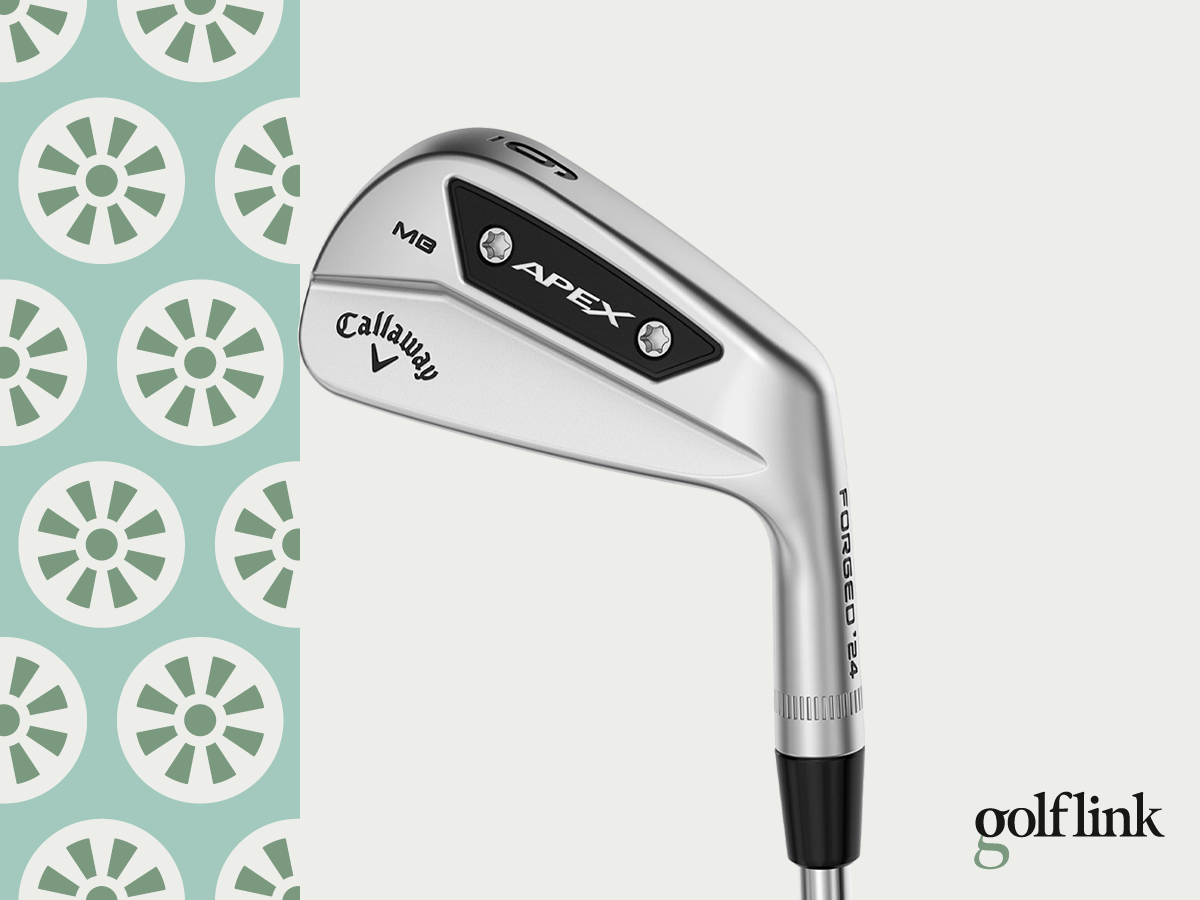
Player Profile: Players shooting in the 70s
GolfLink’s Pick: Callaway Apex MB
FIND AT DICK'S
Muscle back irons are a more forgiving alternative to the traditional blade. The point of a muscle back iron is to provide feel and workability to better players while incorporating some of the offset and forgiveness found in other types of irons. The word “muscle” refers to the noticeable material behind the face of the club, lower on the head near the sole.
Some of the best players in the world play muscle back irons, including Justin Thomas and Adam Scott. The great thing about muscle back irons is that they can seamlessly blend into a mixed iron set whether you have them at the top of your bag (4, 5-iron) or the bottom (7 -iron-wedge).
Who Muscle Back Irons Fit
Muscle back irons are intended for more accomplished players, typically single-digit handicap players who regularly shoot scores in the 70s. The drawback of muscle back irons, however, is that some high-level players find that muscle back irons don’t provide the optimal distance and penetrating ball flight needed for their game.
Callaway Apex MB Muscle Back Irons
Player Profile: Players shooting in the 70s
GolfLink’s Pick: Callaway Apex MB
FIND AT DICK'S
Callaway's Apex irons are an iconic line that dates back to the Ben Hogan days in the 1970s. But make no mistake, the new Apex MB (muscle back) irons and nothing but modern, despite the clean, classic look. Not for the faint of heart, the thin topline and compact head are proof these irons are built for highly skilled golfers.
Players Irons
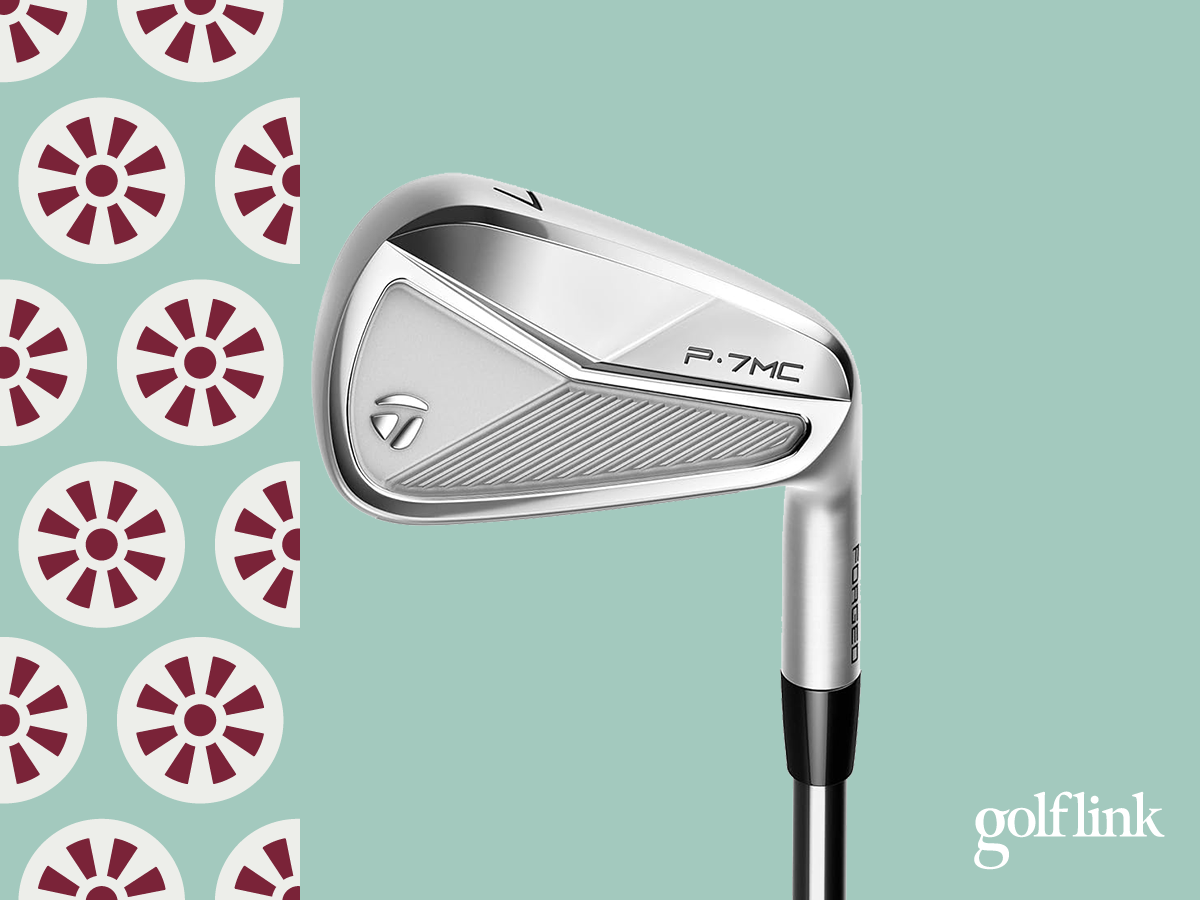
Player Profile: Skilled players who don't prefer blades
GolfLink's Pick: TaylorMade P7MC
FIND ON AMAZON
Players irons are another broad category, but to put it simply, they are intended for better golfers. Players irons can take on the design profile of cavity backs or muscle backs, but they typically don’t lean toward the blade profile.
Players irons provide a smaller amount of forgiveness because if you’re playing these you can consistently find the middle of the club face. This frees up players to shape shots as they please, whereas forgiving clubs are designed to combat left-to-right and right-to-left ball flights.
With advancements in shaft technology, players irons can be paired with just about any shaft on the market. Whether it be steel, lighter steel, graphite, or heavier graphite, players irons allow golfers to take their next steps to shooting lower scores.
Who Players Irons Fit
Players irons are the best fit for golfers who have graduated from more forgiving types of irons but prefer not to go to a full-fledged blade.
TaylorMade P7MC Players Irons
The P7MC irons from TaylorMade are built to optimal feel and control, with a touch of forgiveness thanks to some subtle perimeter weighting. After a few swings, you'll notice the hand-crafted feel and appreciate the workability. These irons aren't for higher-handicap players, but if you have the game to play these 1025 carbon steel beauties, you won't be disappointed.
Blade Irons

Player Profile: 5-handicap or better players who want workability
GolfLink’s Pick: Wilson Staff Blades
FIND ON AMAZON
Blade irons feature the thinnest top and bottom line of any golf iron you can find. They are the least forgiving, lowest launching, and overall hardest to hit. Sold yet? No worries, blades aren’t for everyone, but for advanced players, blades can be a tremendous asset to your golf game.
The workability players get with blades is unmatched, meaning you can control your ball flight, and hit that draw and fade. The best golfers in the world play and execute blades effectively.
Who Blades Fit
Blades fit a small percentage of golfers. Players with a low single-digit handicap, about 5 or less, who want the ability to work the ball in both directions on command should consider blades.
Wilson Staff Model Blades
The Wilson Staff Model Blade irons are a classic blade from a classic brand. Wilson has made some of the best golf clubs for over 100 years. These blades have been played on Tour by former U.S. Open Champion Gary Woodland, among others. Shape it and carve it however you'd like with these blades.
Iron Selecting Guide
Now that you know all about every type of iron on the market, it's time to decide which style is best for your game. Use this table to help guide you to the perfect set of irons.
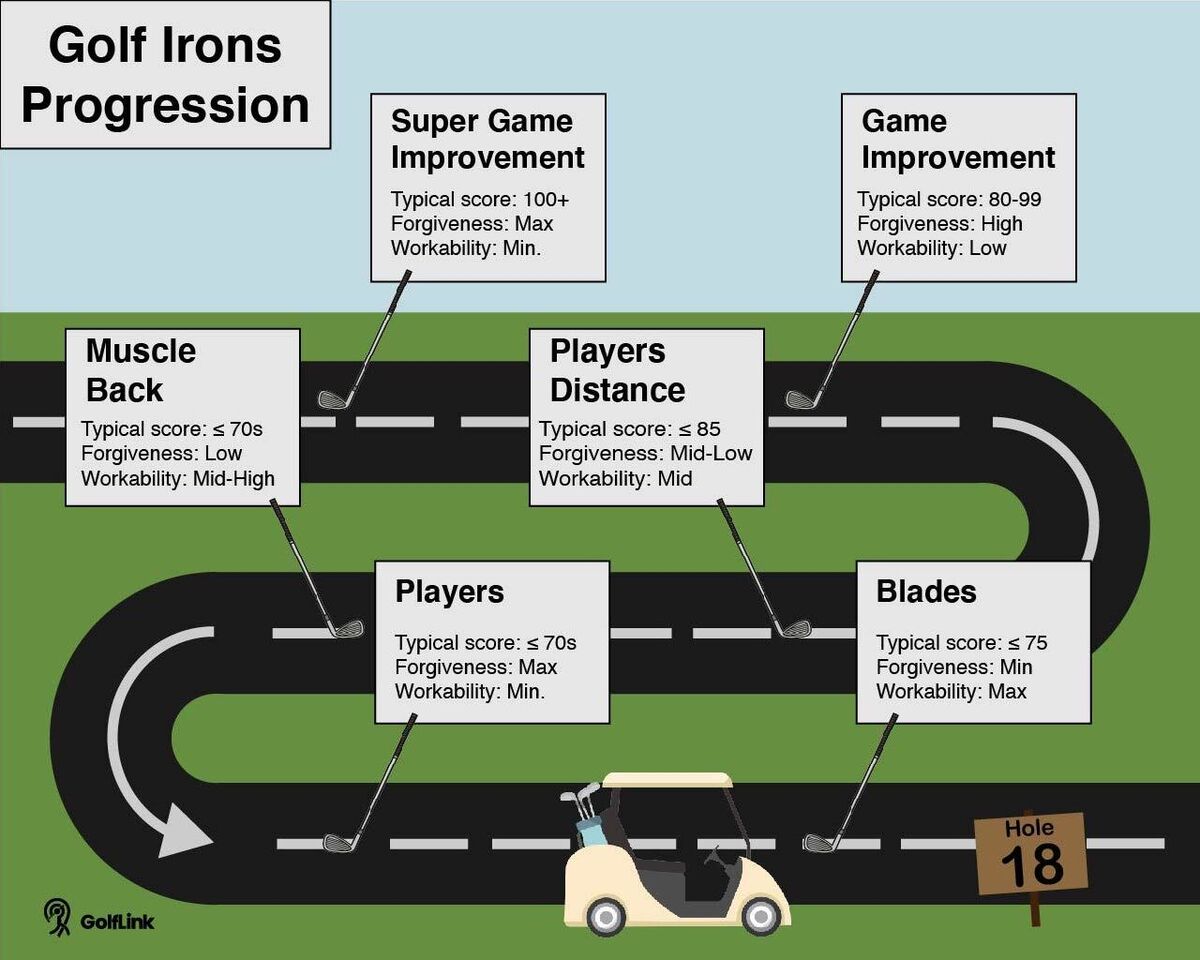
|
Typical Score |
Forgiveness |
Workability |
Distance |
|
|
Hybrid Irons |
100+ |
Max |
Min |
Max |
|
Super GI |
100+ |
Max |
Min |
Max |
|
Game Improvement |
80-99 |
High |
Low |
Max |
|
Cavity Back |
75-99 |
Mid-High |
Mid |
Mid-High |
|
Players Distance |
<85 |
Mid-Low |
Mid |
Mid-High |
|
Muscle Back |
<80 |
Low |
Mid-High |
Mid |
|
Players |
<80 |
Low |
High |
Mid |
|
Blades |
<75 |
Min |
Max |
Lower |
Plenty of Irons in the Fire
When considering new irons, look at all of your options because so many are out there. We have a thriving golf industry with manufacturers that give us so many great options with the best technology the game of golf has ever seen. Take advantage of that by trying everything you can at your local golf retailer to really find out which irons are best for you. Most importantly, make sure you get fit for your irons by a certified club fitter.